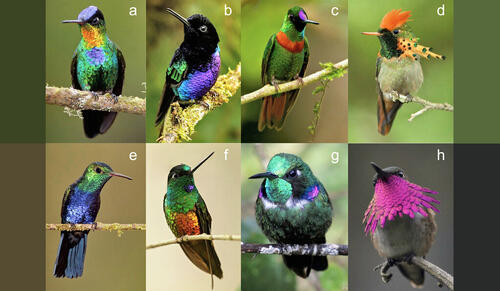
Yale ornithologist Richard Prum has spent years studying the molecules and nanostructures that give many bird species their rich colorful plumage, but nothing prepared him for what he found in hummingbirds. The range of colors in the plumage of hummingbirds exceeds the color diversity of all other bird species in total, Prum and a team of researchers report June 23 in the journal Communications Biology.
“We knew that hummingbirds were colorful, but we never imagined that they would rival all the rest of the birds combined,” said Prum, the William Robertson Coe Professor of Ornithology of Ecology and Evolutionary Biology & YIBS Affiliated Faculty member.
For the study, Gabriela Venable, a former undergraduate student in Prum’s lab (now a graduate student at Duke University), collected data on the wavelengths of light reflected by feathers of 1,600 samples of plumages from 114 species of hummingbirds. Researchers then compared this information with an existing dataset of colors found in the plumage of 111 other bird species, from penguins to parrots. Using their knowledge of avian visual physiology, the Yale team was able to describe the diversity of avian plumage colors as seen by the birds themselves, including hues that are not visible to humans. For more information, please click here for an article published by Yale News.



